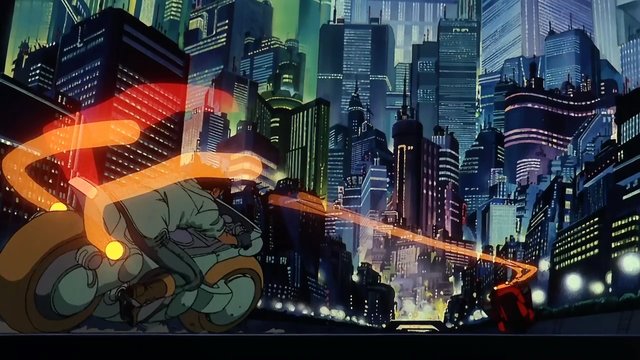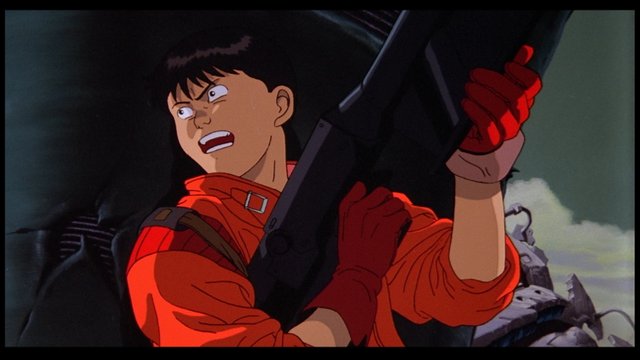🎬 30 Year Anniversary / AKIRA / review

Exactly thirty years ago, we got three top classics of animation from Japan. In the same year, My Neighbor Totoro, Grave of the Fireflies and Akira came out. While all three had a remarkable success on the home court, some of them didn't have that happiness elsewhere. Here I am primarily referring to Akira. Only in the first years of the 1990s this film gets attention in Western countries, which will later lead to its cult status. In the years that followed, Akira contributed to the genre of science fiction as much as classics such as the Blade Runner.
Like almost every other anime, Akira pulls its origins from the manga. Katsuhiro Otomo writes a script and directs a movie that is on the backdrop of the roughly two thousand pages that he himself wrote in the early 80's. In this world, we meet society in the future, in the so-called Neo-Tokyo. Built on ashes after the Third World War, this is a futuristic city, overwhelmed by technological, cybernetic and scientific societies, in constant turmoil and conflicts whose causes are corruption, crime and manipulation. However, when young Tetsuo acquires mysterious powers through a government secret experiment that can't be controlled, Neo-Tokyo will be faced with an unstoppable force.

Akira, within his expressive dynamics and intensity, deals with great metaphysical issues. The name Akira would mean "great" or "pure" in translation, and Akira is the name of the mysterious subject tha has divine powers. He is hidden in one of the plants, and his finding will deeply affect Tetsuo. Scientists disassembled Akira's body and shuffled every part of it into glass vessels that would preserve it for some future times where the research of these would be technologically possible. It's not difficult to think first of the human curse and the uncovered secret - how to reach the level of God. The God complex here is very well manifested. In the film, scientists not only created a godly being, Akira, but immediately followed the Nietzsche thesis- they killed him. But, if we start with Nietzsche's terminology and vision from Zaratustra, they, in essence, created a Superhuman (Übermensch)
Superhuman would be a new stage of a man who would transfer all the superhuman power of God from the other world to this one. It's known that Nietzsche speaks very little about how the superhuman will look, except that he / she will appear as a new kind of child. Superhuman would be genetically and intelligently superior to man, and make humanity as primitive as monkeys for us. But, on the other hand, the philosopher Hans Moravec speaks of the so-called "Mind Children ". These children would be the beings we created, they will bear the marks of our origin, but they will possess cognitive powers and abilities beyond our own, and accordingly will not be bound to this planet. This brief philosophical digression clearly shows the direction Otomo moved in constructing narratives.
Created in the image of a God, all people in themselves, as they say in the film, have Akira, it's just a question of who can become a genetically advanced creature. And Tetsuo and other children who appear in the film, especially Akira, as the glittering deus ex machina, not only are in the final moments more advanced beings, but are also free from the slow pace of biological evolution and become free to develop and confront the fundamental challenges of the infinite universe .

In addition to the brilliantly executed narrative that supports philosophical and social themes, Akira visually looks flawless. In view of its dystopian futuristic atmosphere, the time of the action is predominantly going on at night. This process, traditionally avoided by the animators of that time, led to the use of 327 different colors, which is a record for an animated film. In addition, the film consists of over 160,000 drawings, which was twice as much as was necessary. All this contributes to Akira having a particularly pronounced atmosphere that devours the film, complementing with the crazy dynamics that, like driving a motor, creates a particularly turbulent viewing experience.
A complete atmosphere is supported by the music background itself. It's primarily interesting that the music was recorded before the movie, so the closeness of the action is even more fascinating. It mostly consists of traditional Japanese instruments such as drums and various percussions, as well as epic tones over tensioned parts. But what is particularly exciting is the phenomenal use of silence. From the beginning to the end, every moment in which the silence prevails is done not only in a precise but dramatic way, very powerful and effective.
Akira continues to shape and influence artists across all forms of media. Countless artists from movies, music, and comics have all been taken in by the neon glow of Neo Tokyo. Whether or not the film does get a live-action adaptation, there is something about Otomo’s creation that has revolutionized anime and manga since its creation. It is even a bit of a prophet since it predicted the 2020 Tokyo Olympics.
It remains one of the most important exports of Japanese cinema ever and earns its reputation among Rashomon and Tokyo Story as an extraordinarily influential work. Just as when the film ends with Akira creating another plane of existence, the film and manga itself have created its own new universe. Science Fiction has never been the same.*
This was part of my translation from Croatian to English from ''Ziherhr article ''Retropetak: I neka bude raznovrsno blještavilo''
30 years and still going strong. 1988 was indeed a legendary year for anime!
This film was probably as groundbreaking in anime as Jurassic Park was in (fiction) cgi. It should be taught in film (history) classes. In fact, that's when I heard of it, when studying film in the early 2000s. Not in class though but thanks to a friend who a big fan and collector of manga and anime.
It's probably the anime that I've watched the most times and it keeps amazing me every single time for several reasons. And yes, its score is breathtakingly good.
Thanks for translating and sharing these great articles. Keep up the good work!